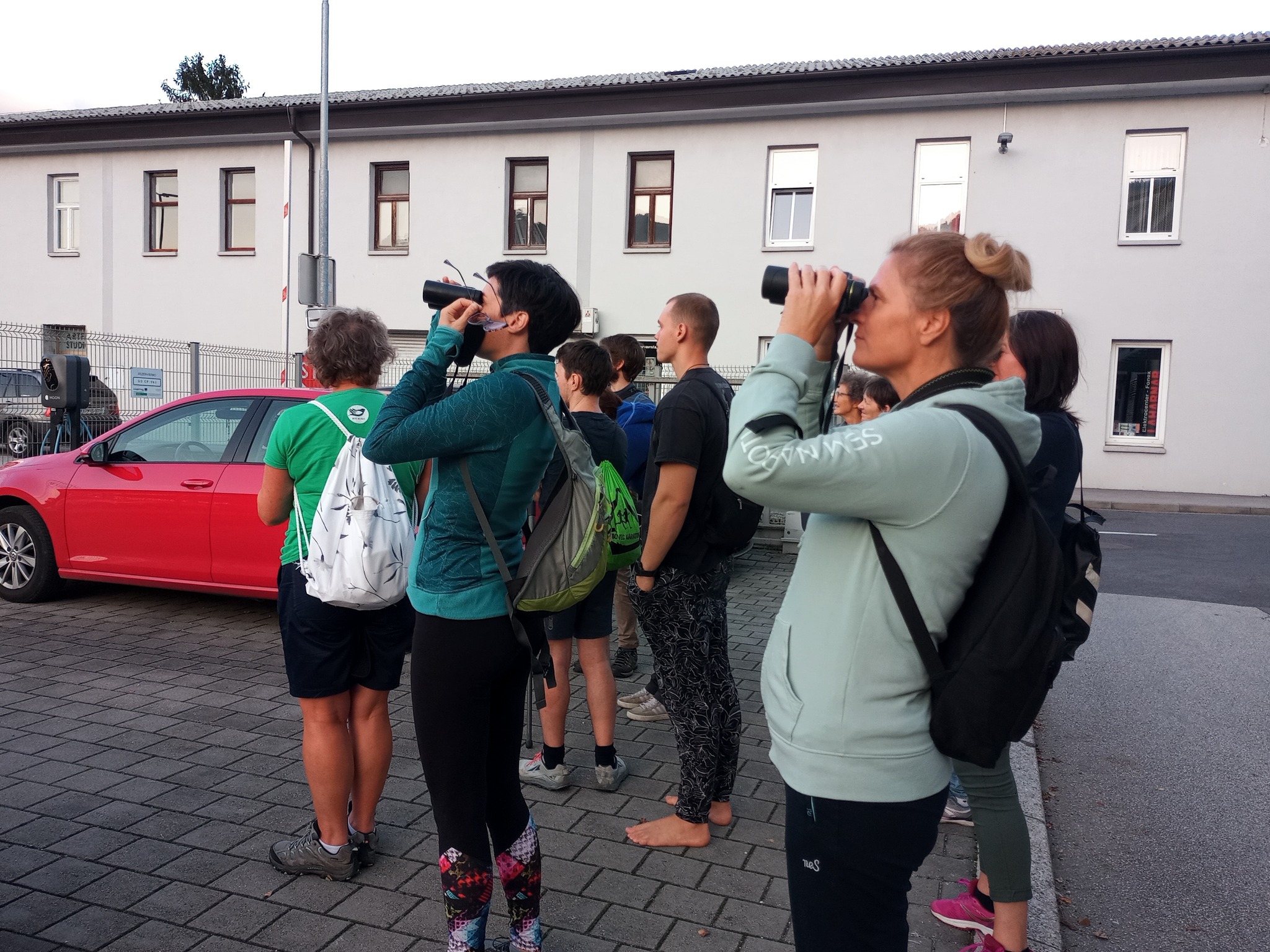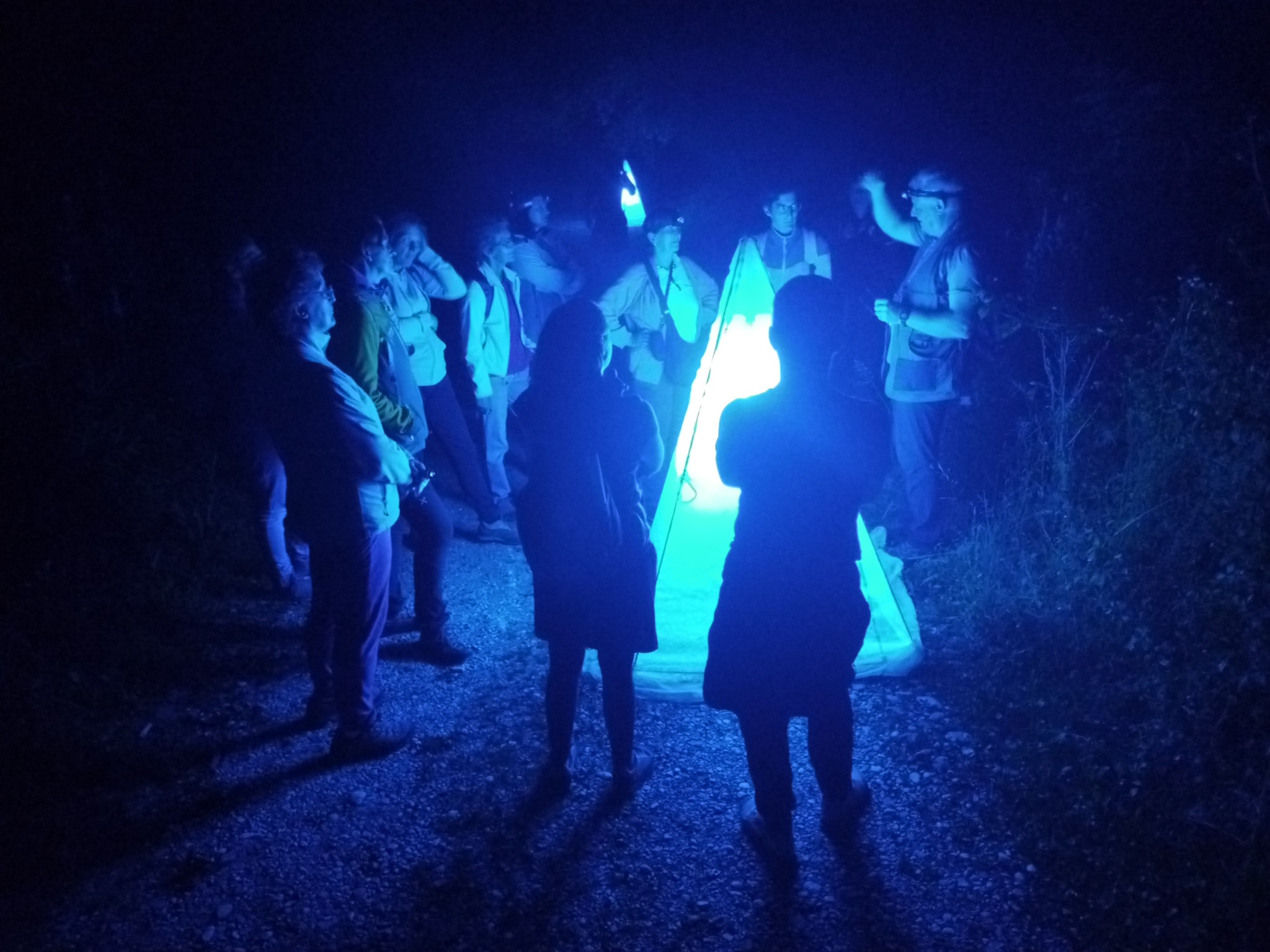Noticing Nature's Diversity: Tolmin's Study Circle in Action"
The engaged participants of the study circle in the small town of Tolmin, Slovenia, explore the importance of biodiversity, joining a journey with our local partners, the Posoški Development Center, a unit at Ljudska univerza Tolmin, to discover the beauty of our surroundings.
This local experiment, supported by the SHARED GREEN DEAL, is implemented using a study circle approach which aims to promote respect for the diverse ecosystem of the Tolmin basin. Nestled at the meeting point of the Alps and the Dinarides, next to the rivers Soča and Tolminka, the town boasts an interesting and almost unique natural landscape nowadays.
During the fifth meeting of the local study circle, they explored and researched the birds "in front of their home" with the aim of participating in the citizens' science campaign Birds Around Us at the end of January 2024. The main goal of the study circle is to preserve the local biodiversity systems for future generations.
Below are selected photos and accompanying thoughts from the dedicated study circle participants. The impressions are also available in Slovenian here.
Impression 1: Observing and studying the birds that live around us

"Ornithologist Domen Stanič led us into the world of singing birds around us. Do you know how many different types of birds fly in the sky? Around 360 different species have been observed in Slovenia, slightly more than 540 in Europe. We could also answer that it is decreasing, as the populations of 30% of bird species are declining in Europe, mainly linked to the cultural landscape. Since birds are excellent indicators of the state of nature, you should definitely consider this information. However, Baška Grapa, according to the current data of the DOPPS Association, can boast of a very large population of water osprey, which lives along the oxygen-rich, unpolluted rivers.
We concluded our birdwatching on the outskirts of the craft zone in Log, where we listened to the evening songs of birds as they prepared to rest for the night. The keen ear of a connoisseur detected the calls of green woodpeckers, wood warblers, and jays."
-From study circle participant, Darinka Gaberščik.
Impression 2: Getting to know night butterflies by the Soča near Tolmin

"When night falls, the colorful life of night butterflies begins along the Soča near Tolmin, which is mostly hidden from all of us. Among the approximately 3,600 species of butterflies in Slovenia, only 180 are diurnal. With a planned night observation, we can get to know this living part of nature, which plays a very important role in the local ecosystem. Butterfly caterpillars are food for many birds that accompany us during our daily life in the city, in gardens, and wherever we go. At least for now, that's how it is. The number of butterflies is decreasing over the years. The main reasons are the expansion of forests and infrastructure, intensive farming on remaining grasslands, and light pollution. The butterfly trade and collecting on our rich soil are also present, as butterflies are already very few in some countries, for example, in the Netherlands. The ŠK participants marveled at the night butterflies along the Soča near Tolmin with expert Bojan Zadravec: "This one is very rare," we heard, among other things. Butterflies must stay. It's true that we don't see them at night, but that's why we probably can't imagine our environment without birds. Caring for nature in the surroundings of Tolmin and in the wider Soča valley, or spreading awareness about it, is certainly key to being able to enjoy the preciousness that we have for a long time to come. "
- From Study Circle participant, Katja Kragelj Jug
Impression 3: Summer wandering along the log, the riparian forest of the Soča river near Tolmin

We got to know the log or floodplain forest on the left bank of the Soča river between the Tolmin cemetery and the confluence of the Tolminka and Soča rivers, where, in addition to numerous plant and animal species, invasive plants have also found their place, with the local resident, biologist Dr. Gregor Torkar. He clearly showed us how much this area has changed in recent decades, as he explored it as a child. As a result of the deepening of the Soča riverbed, dead trees disappeared, trees whose root systems depended on their moisture and high groundwater began to decay, and the undergrowth and animals that need moisture to survive also began to disappear. However, invasive non-native plants have found their place here, spreading uncontrollably and displacing native species.
- From Study Circle participant, Darinka Gaberščik
Related Green Deal Priorities
Related localities


CONTACT
For further details please contact co-leads Professor Chris Foulds (chris.foulds@aru.ac.uk) and Professor Rosie Robison (rosie.robison@aru.ac.uk).

This project has received funding from the European Union’s Horizon 2020 research and innovation program under grant agreement No 101036640. The sole responsibility for the content of this website lies with the SHARED GREEN DEAL HAS project and does not necessarily reflect the opinion of the European Union.

